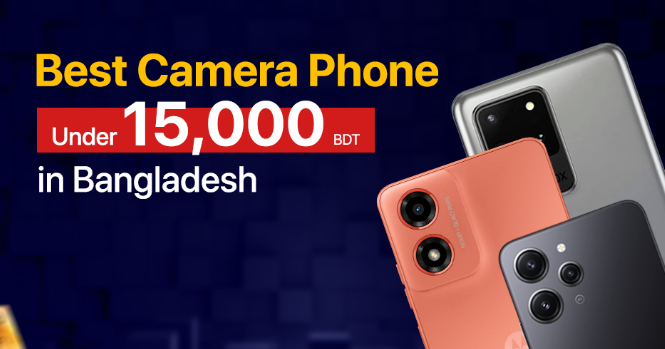Starting university can be overwhelming, juggling lectures, assignments, and social life. One thing that makes life easier is having a reliable phone, but finding the best phone for students under 15000 BD can feel like searching for a needle in a haystack. This guide will help you navigate the market, comparing features and highlighting the top contenders, ensuring you find the perfect device within your budget. We’ll cover everything you need to know to make an informed decision, saving you time and money.

Choosing the Right Smartphone for Students
This section focuses on identifying essential features and specifications students need in a phone, considering their daily use and budget constraints. We’ll analyze factors such as battery life, camera quality, processing power, and storage capacity, making sure to highlight the importance of each aspect for the average student.
Battery Life: All-Day Power
- Long-lasting battery: A phone with a large battery capacity (at least 4000mAh) is crucial for students who are constantly on the go, using their phone for communication, study, and entertainment throughout the day. A battery that lasts all day will avoid the frustration of constantly needing a charger.
- Fast charging: Fast charging technology significantly reduces charging time, making it easier to top up the battery during short breaks between classes or study sessions. It ensures you’re never far from a full charge.
Many students find themselves constantly needing to charge their phones throughout the day. Having a phone with a long-lasting battery can eliminate this stress and make their day-to-day life much smoother.
Processor and RAM: Smooth Performance
- Sufficient processing power: A decent processor (like a Snapdragon 600 series or equivalent) ensures the phone runs smoothly, handling multitasking, demanding apps, and games without lagging. This is crucial for students using their phones for studying, research, and entertainment.
- Adequate RAM: At least 4GB of RAM is recommended for efficient multitasking. More RAM ensures that apps run smoothly, and the phone doesn’t slow down when running multiple applications simultaneously.
A student using their phone for note-taking, research, and streaming videos will need sufficient processing power and RAM to prevent the device from freezing or lagging. A smooth-running phone can be a real advantage in busy student life.
Storage: Ample Space
- Internal storage: 64GB of internal storage is usually sufficient for most students, allowing them to store apps, photos, videos, and documents. However, if they take lots of high-resolution photos or videos, 128GB would be a better option.
- Expandable storage (SD card): The ability to expand storage via an SD card provides additional flexibility if needed, allowing for greater capacity at an affordable cost.
Consider the average amount of data a student might have, including apps, photos, videos, and downloaded course materials. This guides the choice of appropriate internal storage capacity. Using cloud storage can help supplement the phone’s internal capacity.
Top Phones Under 15000 BD
This section will provide a detailed comparison of several leading phone models available in Bangladesh within the specified price range. We will weigh up their pros and cons, helping students make the best choice according to their priorities.
Model A: [Insert Phone Model Name and Price]
Details about Model A, highlighting its key features, strengths, and weaknesses within the context of student needs.
Model B: [Insert Phone Model Name and Price]
Details about Model B, highlighting its key features, strengths, and weaknesses within the context of student needs.
Model C: [Insert Phone Model Name and Price]
Details about Model C, highlighting its key features, strengths, and weaknesses within the context of student needs.
Insert a comparison chart here: A table comparing Model A, Model B, and Model C, showing features such as processor, RAM, storage, battery life, camera quality, and price.
| Feature | Model A | Model B | Model C |
|---|---|---|---|
| Processor | [Insert Processor] | [Insert Processor] | [Insert Processor] |
| RAM | [Insert RAM] | [Insert RAM] | [Insert RAM] |
| Storage | [Insert Storage] | [Insert Storage] | [Insert Storage] |
| Battery | [Insert Battery] | [Insert Battery] | [Insert Battery] |
| Camera | [Insert Camera Specs] | [Insert Camera Specs] | [Insert Camera Specs] |
| Price (BDT) | [Insert Price] | [Insert Price] | [Insert Price] |
Understanding Phone Specifications
This section dives deeper into technical aspects of smartphones, demystifying jargon and explaining their relevance to student users. We’ll clarify key terms such as processor, RAM, and storage, enabling students to understand the specifications of various models.
Processor Explained
The processor, or CPU (Central Processing Unit), is the “brain” of the phone. It handles all the calculations and instructions, determining how fast apps launch, games run, and overall responsiveness. A more powerful processor leads to a smoother and faster user experience. Different processors have different strengths and weaknesses. For example, Snapdragon processors from Qualcomm are commonly used in Android phones. The number in the processor model (e.g., Snapdragon 665, 778G) indicates its performance level. Higher numbers represent more powerful processors.
RAM’s Role in Multitasking
RAM (Random Access Memory) acts as short-term memory for the phone. It stores the data that the processor needs to access immediately. More RAM allows for smoother multitasking—running multiple apps simultaneously without lag or slowdown. A higher amount of RAM improves the overall performance of the phone, enabling students to seamlessly switch between apps like messaging, note-taking, and research tools without performance issues.
Storage Capacity for Apps and Files
Internal storage is where your phone stores apps, photos, videos, music, and other files. It’s measured in gigabytes (GB). Insufficient storage can lead to slower performance and the inability to download new apps or take more photos. Expandable storage, through an SD card slot, provides the option to expand the storage capacity when needed.
Factors to Consider When Buying a Best Phone for Students
This section looks at additional aspects, beyond technical specs, that influence a student’s choice of phone, such as brand reputation, warranty, and after-sales service.
Brand Reputation and Reliability
- Brand trust: Look for established brands with a proven track record of reliability and quality. This reduces the risk of purchasing a low-quality device.
- Warranty and support: Check the warranty period offered by the manufacturer and the availability of authorized service centers. A good warranty can provide peace of mind.
Operating System (Android vs. iOS)
- Android: Offers more flexibility and customization options but can sometimes be more susceptible to malware.
- iOS (Apple): Generally considered more secure and user-friendly, with a simpler interface. However, it offers less customization.
Camera Quality for Everyday Use
While a high-megapixel camera is desirable, consider if you need professional-grade quality. A phone with a decent camera (around 13-48 megapixels) will suffice for students for capturing photos, documents and short videos.
Debunking Myths About Budget Smartphones
Myth 1: Cheap phones are always unreliable.
Not true. Several brands offer excellent budget phones with reliable performance. Choosing a reputable brand and understanding the specifications can lead to a good purchasing decision. Many budget-friendly phones offer solid performance for daily tasks.
Myth 2: A phone’s camera quality is always directly proportional to its price.
While a more expensive phone might have better features, image processing, and low-light performance, many budget-friendly phones offer surprisingly good cameras for everyday use.
Myth 3: You always need the maximum storage.
Assess your needs. While more storage is always useful, starting with 64GB of internal storage is often enough for a student, and they can always add a microSD card if they need more space for storing files.
FAQ
What is the best budget phone for students in Bangladesh?
There’s no single “best” phone, as the ideal choice depends on individual needs and preferences. However, consider the models mentioned above, comparing features and prices to find the best fit for your requirements.
Which phone brands offer good value for money under 15000 BD?
Several brands, including [Insert 2-3 relevant brands], offer competitive smartphones within this budget. Research specific models to compare features and user reviews.
What are the most important things to consider when buying a student phone?
Prioritize battery life, processing power, storage capacity, and a decent camera. Don’t forget to consider the warranty and after-sales support offered by the brand.
Should I choose Android or iOS for a student phone?
Both offer advantages and disadvantages. Android offers more customization, while iOS is often considered simpler and more secure. Your preference should depend on your comfort level with the operating system.
Can I find a good phone with expandable storage under 15000 BD?
Yes, many phones within this price range offer expandable storage via microSD card slots. This is a good feature to look for as it offers added flexibility if you need more storage space.
How long should a student phone battery last?
Ideally, a student phone battery should last at least a full day of moderate use. This includes making calls, texting, using social media, and potentially some light gaming or streaming.
Final Thoughts
Choosing the best phone for students under 15000 BD involves careful consideration of various factors. Prioritize essential features like battery life, processing power, storage, and camera quality while considering brand reliability and warranty support. By following the guidelines and comparisons in this guide, you can confidently select a phone that perfectly suits your needs and budget, making your academic journey a little easier.




Leave a Reply